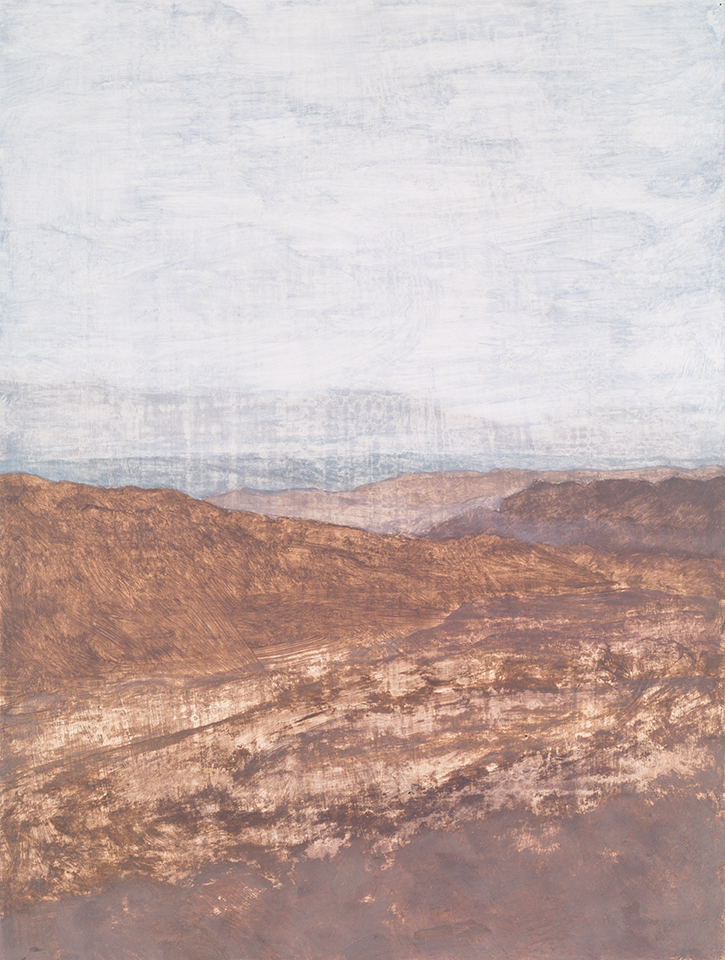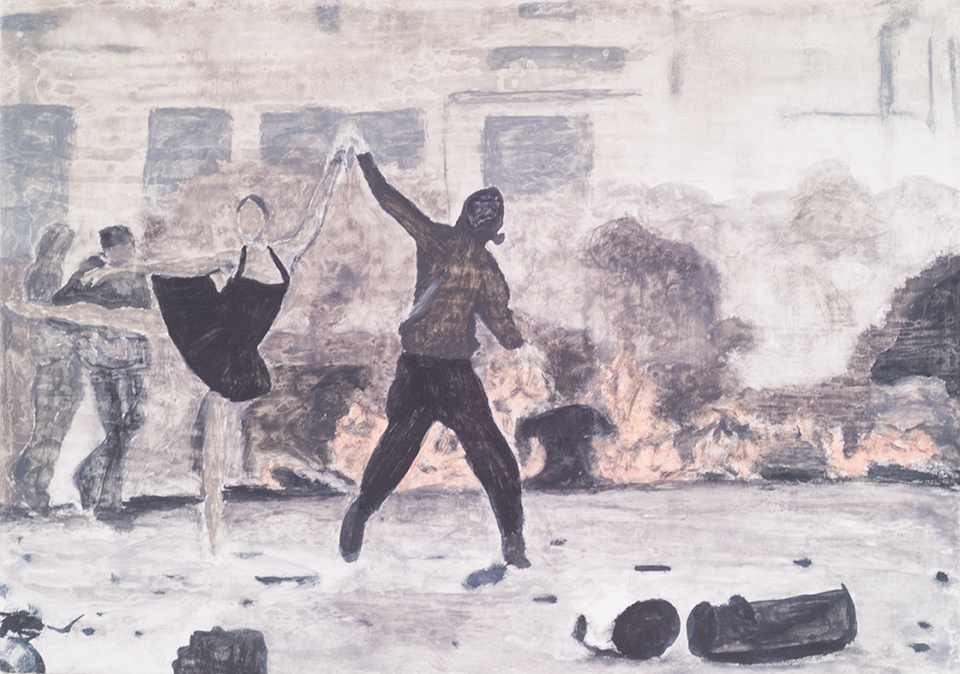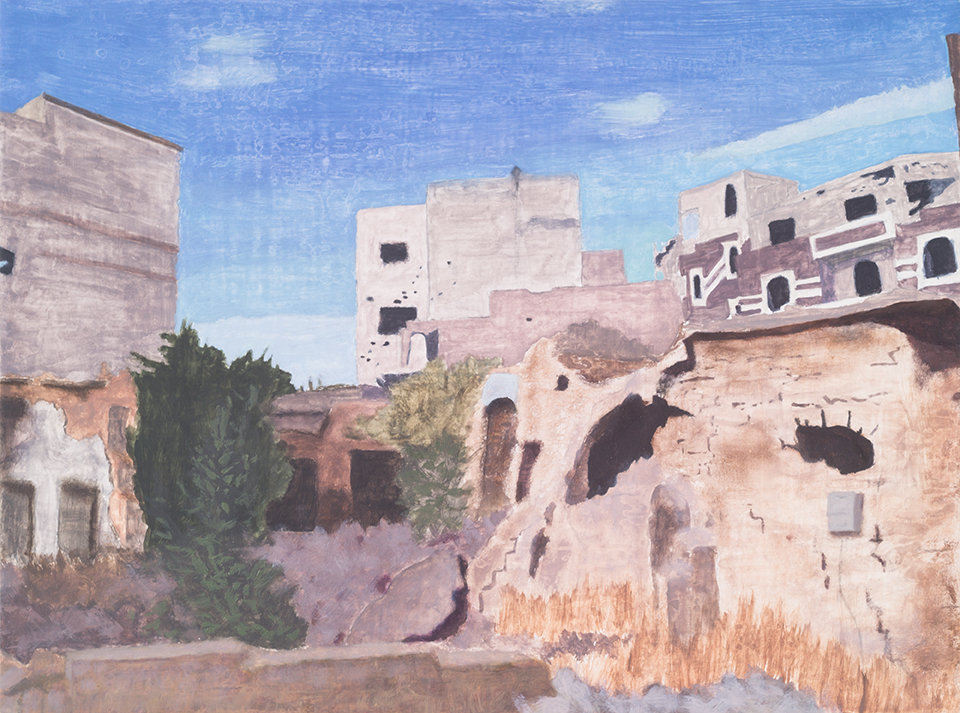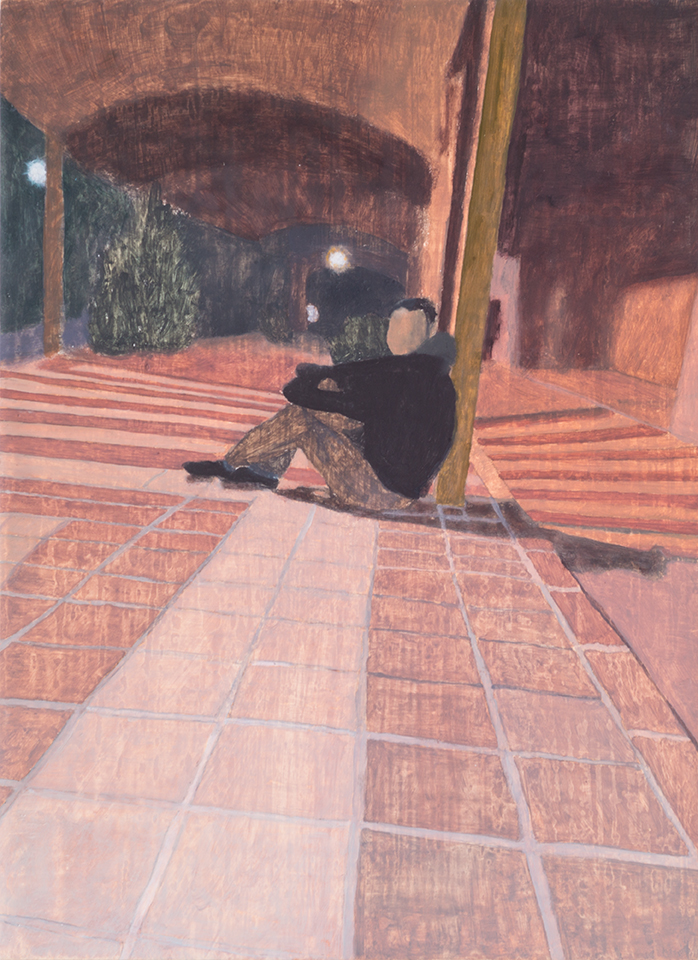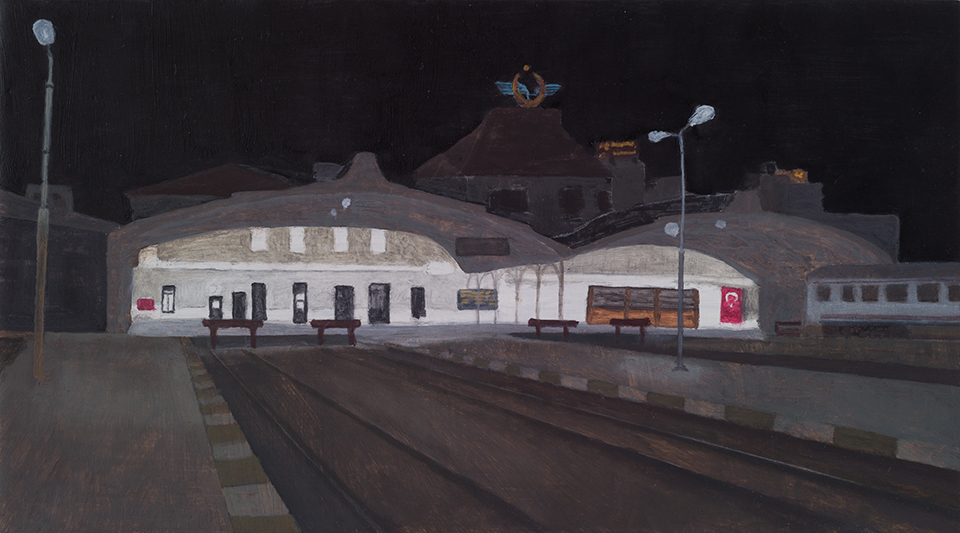
Boston
The artist invited refugee participants in Tufts University’s Refugees in Towns project to send him photographs of what feels like home to them – from any time and any place. He selected up to four of their images to paint and asked the participants to write about those images or about home in general.
This iteration of ‘Feels like home’, originally scheduled to take place in Boston in April 2020, took place online in October 2020 due to the Covid-19 pandemic.

Barnabas: Makhanda, South Africa
26 x 19.5 narrativeThe first thing I noticed when I arrived in the then Grahamstown in 2018 was the deplorable state of the roads. The potholes remind me of the bad state of the roads in Zimbabwe, where the nation’s leadership has the audacity to rename the roads without fixing them, just as Grahamstown was renamed Makhanda towards the end of 2018.
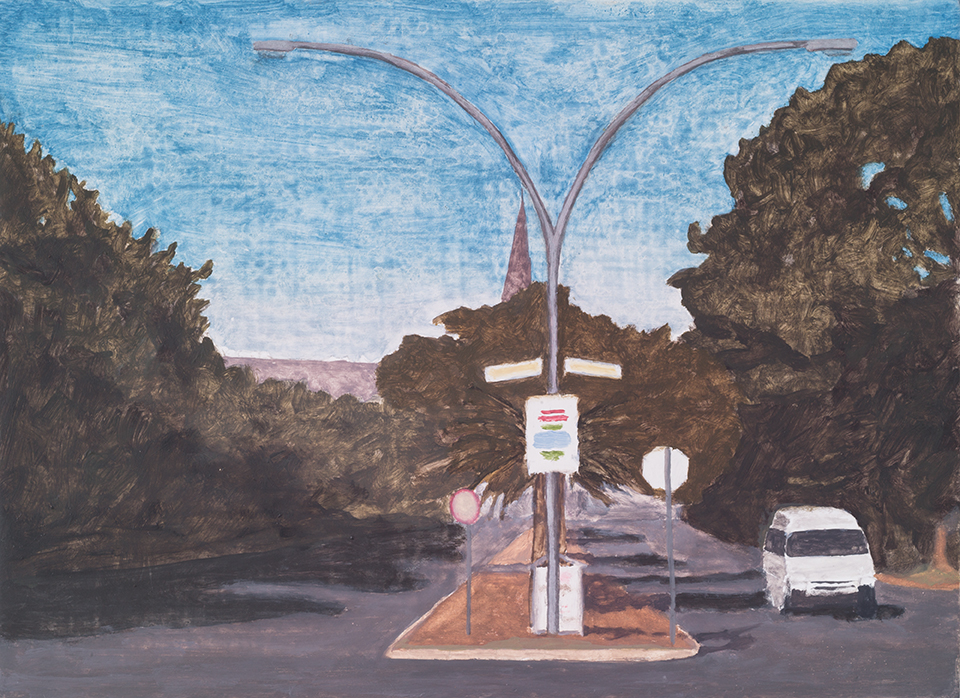
Barnabas: High Street, Makhanda, South Africa
22.5 x 17 narrativeMakhanda’s central business district is marked by High Street, which is quite wide. That street reminds me of the streets of Bulawayo, which is Zimbabwe’s second capital. In building Bulawayo, the early British settlers made wide roads to accommodate U-turns for their horse-drawn wagons. Nicknamed the City of Kings and Queens, Bulawayo was established as the nation’s industrial hub, and I lived there for two years.
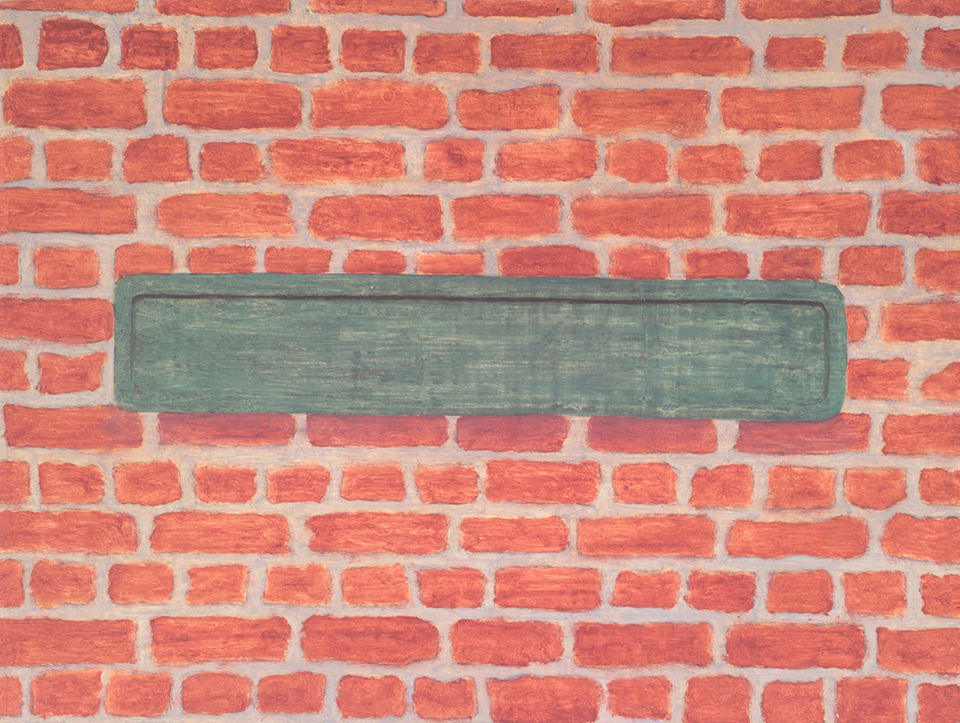
Barnabas: Salisbury House, Makhanda, South Africa
20 x 15 narrativeThere is a building called Salisbury House at Rhodes University. While I am not privy to its history, its name always reminds me of Salisbury, the old colonial name for Zimbabwe’s capital city, Harare. Interestingly, Zimbabwe was previously named Rhodesia after the British arch-imperialist Cecil John Rhodes, whose name the university is also named after.

Taj: Tel Aviv, Israel
17 x 20 narrativeThis drink is called "Jabana" and is well known in Sudan, Eritrea and Ethiopia. It’s considered a social thing, when people sit and drink: it is not only coffee, but comes with snacks and music and chatting. Usually women prepare it and men share it to drink. It starts in some places as early as 12 and goes on in places until 8 pm.

Leila: Tehran
26 x 26 narrativeWhen the United States passed more economic sanctions on Iran, a group of activists gathered on the streets in Tehran and released white balloons to show that the Iranian people – not the government – respect peace. I downloaded this photo from a news agency website and for some reason saved it in my files. When I look at it now, I understand it as missing my work as an activist and missing Tehran's streets, where my friends and I launched campaigns for women's rights. Most importantly, this photo reminds me of my mixed feelings of anger and hope, of belonging to a group and of our anxious struggle to make change – and of course, fear accompanied all of this. I feel like a balloon floating in the air, on the street, free in spirit and in constant movement.
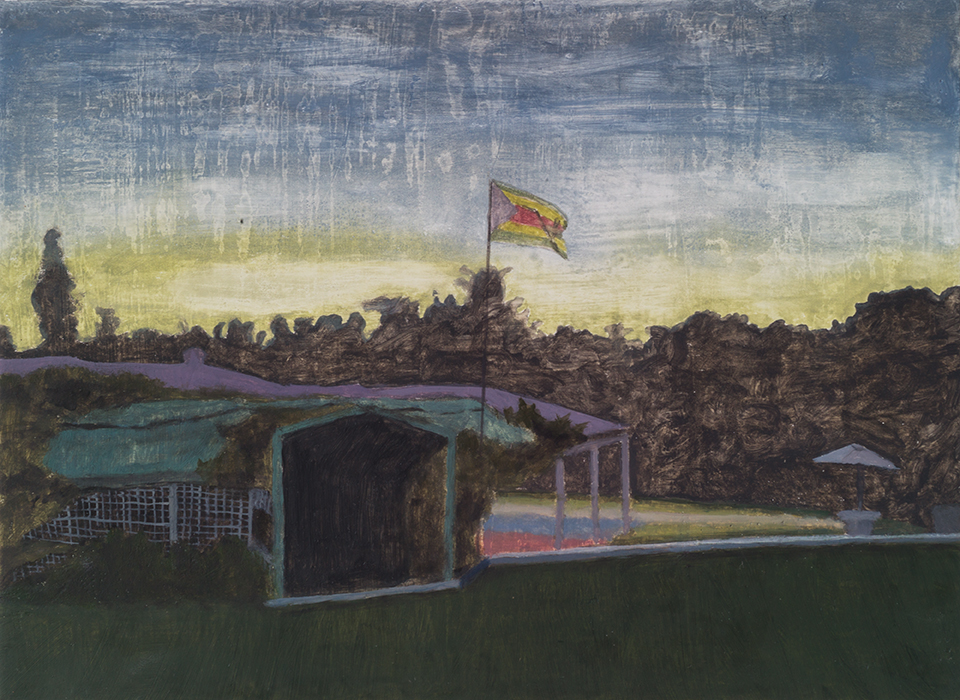
Tash: Mandurah, Western Australia
22.5 x 17 narrativeMy family had to leave Zimbabwe and our very beloved home, a home open to all our friends as we grew up and to international travellers who came to experience a taste of Africa; what many saw as the trip of a lifetime. Our life was filled with beauty and abundance.
We left Zimbabwe with positive attitudes to embrace a new life in Australia. Thanks to our parents’ influence, all three children thrived, making a home away from home in our own way while my parents created this place… lovingly called ‘The Farm.’ A new place where all are welcome. As friends and family came, we got them to mark on the map where they had come from: Iran, Russia, Finland, Sri Lanka and so many more… wonderful people with homes so far away finding a little peace and serenity in our home. Whether camping in the garden or taking part in our annual septathalon for those orphaned at Christmas, we were surrounded by people in the same boat, who had willingly left home for adventure or love or been forced out by circumstances beyond their control. My family has been forever changed by the loss of our home, but we found that you can rebuild, and it can be better… it is always down to the people who come to enrich it.

Leila: Albuquerque
26 x 19.5 narrativeIn 2014 I went on my first academic trip to the city of Albuquerque in New Mexico. Walking alone one afternoon in its historic downtown, I stopped and stared at this house with walls of clay in the fashion of the historic clay buildings in Iran ¬– in my hometown of Mashhad and in other cities. It was simple but sophisticated, and old. It seemed as enigmatic as my own culture, with the metaphorical “Sale” sign on the door. I wondered who had lived here and when, and what had happened to the house that it was now for sale.

Leila: Arizona
22.5 x 17 narrativeThis Sufi dance took place at a concert in Arizona where the Indian-Iranian singer mixed Persian folk songs and melodies with Indian traditional music and electronic instruments. For me, the songs were like moving along and between borders and edges. The dancer appeared on stage and spun for almost seven and a half minutes, in Sufi style, adding to the complexity of the music. The dance was simply a constant spinning while standing in the same spot on the floor, her head and body moving and her skirt flying around, a symbol of crossing spaces but standing strong on the ground. She spun so many times in the same place that it was almost nauseating, and then she calmly came to a stop.
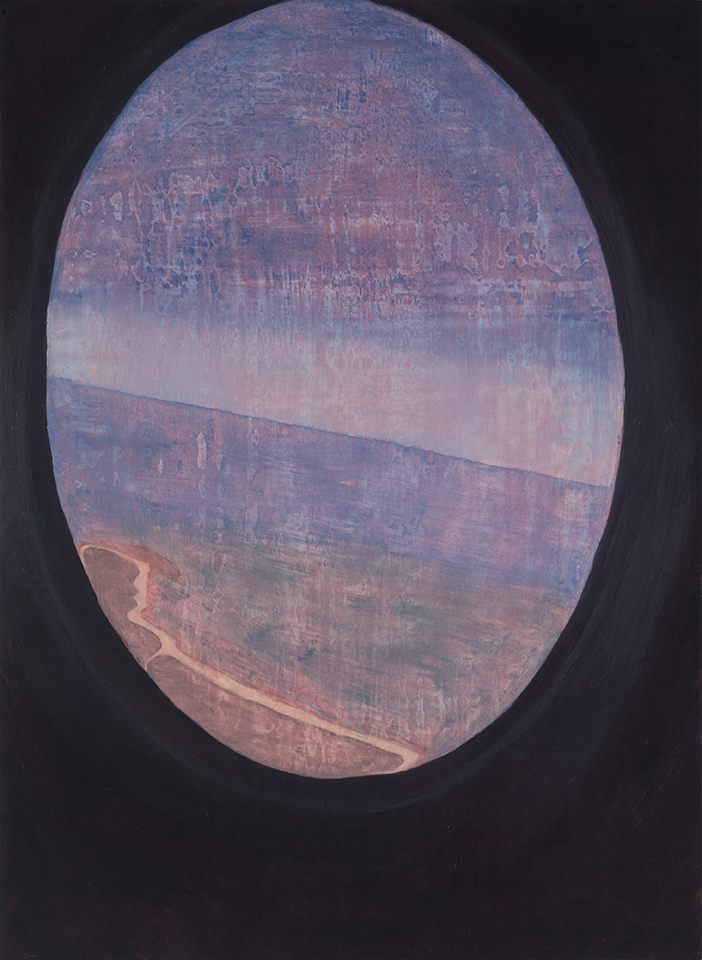
Tash: Over the Indian Ocean
17 x 22.5 narrativeSummed up by the Welsh word hiraeth, which is a longing for one's homeland and an expression of the bond you feel when far from your home country.
To me, it also suggests places that once existed that have changed or disappeared – such as our home, which is no longer home because all the people that made it home are gone.
This picture represents the weird, in-between feelings of pain and hope I experienced on leaving my homeland to find a new one.

May: Aleppo, Syria 3
19.5 x 26 narrativeOur loquat tree, where we spent shady afternoons picking fruit to eat and digging for worms to fish with. It’s where our neighbourhood cats took their nap. It’s where my mom found my sister and me eating dirt as toddlers. It’s where happy memories were born and where I hope to one day be again, just one more time.

Tash: Port Villa, Vanuatu
19.5 x 26 narrativeRed Cross opened my eyes to some of the harsh realities of the world through my work with refugees from many different countries, where I learned about conflicts I had never even heard about. I heard first-hand accounts of the personal pain of losing home and often even a homeland, but this work also exposed me to the world’s beauty, to the acts of kindness that can restore our faith in humanity. It was only through my work with refugees from war-torn countries that I was able to begin to heal the trauma of losing my own home in Zimbabwe when I was 17, in a cold civil war that I only began to understand through the stories of others. A home represents the safe place that encapsulates shared experiences, emotions and basic human needs and the need to belong and feel safe.
Trauma teddies are knitted by Red Cross volunteers for those who have experienced traumatic events, like losing one’s home, usually from a natural disaster. I lost my home in Zimbabwe in the violence about land reform there, and I lost my second home to Cyclone Pam while doing disaster preparedness in Vanuatu. The trauma caused by fellow humans was the hardest, as it created an existential crisis that made me question if home could ever feel safe again. This teddy represents the importance of home to me, and of having familiar, comforting things around myself.


